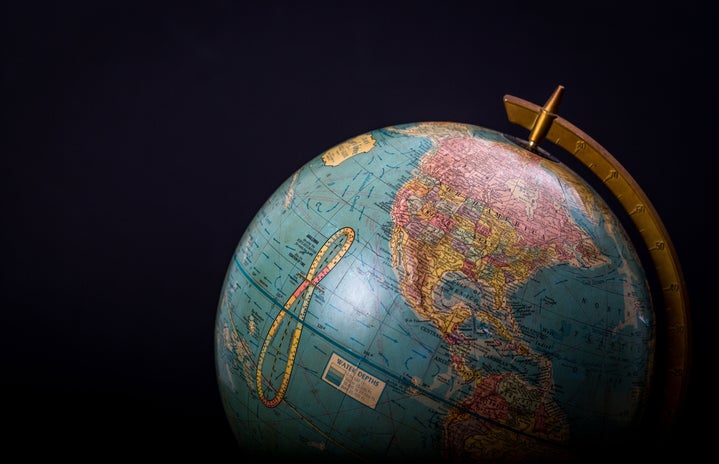In the mornings of my childhood, I’d often find myself drawn to the kitchen first thing upon my wake, well after the sun had made its ascent into the gleaming sky. There, I’d find my mother waiting for me, an outstretched hand awaiting mine, an invitation to dance with her to the music playing throughout the house that’s ever so lively.
This music, familiar and boisterous, I’ve known my whole life the way I do a friend, a comfort passed down from my mother and to her from her own. Being so far away from home, we both found comfort in our cultural music, and she often expressed her discontent in never having learned the traditional dance that accompanies it.
I was only a child when I heard her complaints, thinking this tradition was reserved for those who were in Honduras and unnecessary for those who weren’t. I was perfectly content with these morning dances as is, hands interlocked and senseless prancing around the house. Why supplement tradition in place for a good time?
And all of the sudden, I understood.
Despite returning to my family’s native soil every year without fail, I couldn’t recount a time I’d found myself on a small coastal island in the territory of Honduras. I couldn’t remember the scenery that surrounded me, with its clear beaches and blue water, and I especially couldn’t remember the people before me in their bright clothes and sharp moves, all of which I found myself strangely envious of.
Music was playing, and I recognized it immediately as the same song that I heard often enough in my kitchen back at home. That was the same—the song playing and the humid air that surrounds you as you listen to it in the summer. Yet the dance was not the same. No, there was no senseless dancing to be found, no random movements and jutting for the sake of “moving to the beat.” This was a real dance, one that matched the rhythm of the song, the fast pace and the rich sound; this is what real punta looks like.
All of the sudden, I’m embarrassed and angry, upset at the fact I’d been stupid enough to forgo learning such an art. I now find myself in the face of real culture, silent. I’m envious and hungry, ready to devour every move I witness.
This doesn’t last for long; for as long as I’m envious, I’m just as quickly learning to dance myself.
These people that surround me are the Garifuna people, a mix of indigenous Caribbean and African groups that were exiled to Central America, including Honduras. The Garifuna people are beautiful, mesmerizing in their bright colors and decorative garb. The ladies don long skirts and dresses, ones that rattle with every blow of the wind and every step in their dance.
During this intimate but casual celebration, the men go without their dashiki and instead feel the air around them on their bare skin. The Garifuna people dance, and it’s entrancing. The dance is what you expect of punta—hips moving low and fast, not missing a single beat of the drums being played, el Primero y la Segunda, with tenor and bass that guides the rhythms along.
I’m spectating, never happier to hear punta, and suddenly I’m dancing. A culture of community and the passing of tradition, they share their dance, their music and their celebrations with all. To join in is the expectation, and so I join. I’m young, still never having learned to dance punta (from my mother who also didn’t know). The Garifuna people decided that today, we learned.
Today, I dance punta in my bedroom when I’m bored. I dance it with my mother in the kitchen. I dance it when I’m back home, on Honduran soil. I think of the Garifuna people, and I reminisce on their culture and liveliness, their welcoming and their teachings, and think how thankful I am to have been taught by them the way of their dance. This is my experience with the Garifuna.
After sharing my experience with these people, it only seems fair to them to illuminate their stance within Honduras. While I love my country, I do not love its actions towards our companions in land and culture. The lack of respect surrounding their human rights, with little to no acknowledgment of their traditional lands and customs, has been steady throughout their presence in this county. The criminalization of human rights defenders persists. Unfair treatment, unlawful arrest, physical abuse and more all continue. The Garifuna people share with us, only to be turned away from tolerance and met with discrimination.
I write this to share my experience to take part in the tradition of oral storytelling (which they’ve shown me) and to keep from complacency. I hope to combat the habit of using good memories to overlook the hardships faced by minority groups we often interact with. I hope to adequately acknowledge that pride in one’s country should not mean tolerance of their crimes, nor blind defense of them. In hopes that more people find their voice in speaking up for others, those who often have theirs taken, this is my first step in finding mine.
As I celebrate Black History Month, I think fondly of the Garifunas and their teachings to me and give my sincerest thanks.
Want to see more HCFSU? Be sure to like us on Facebook and follow us on Instagram, Twitter, TikTok, YouTube and Pinterest!


